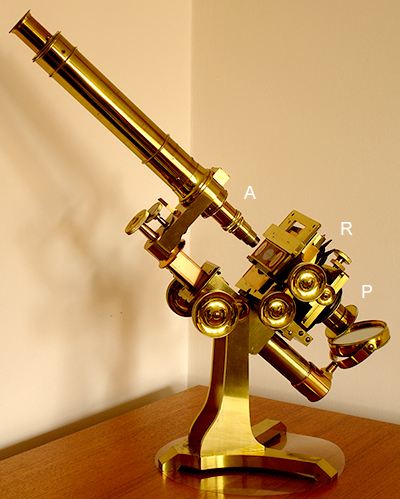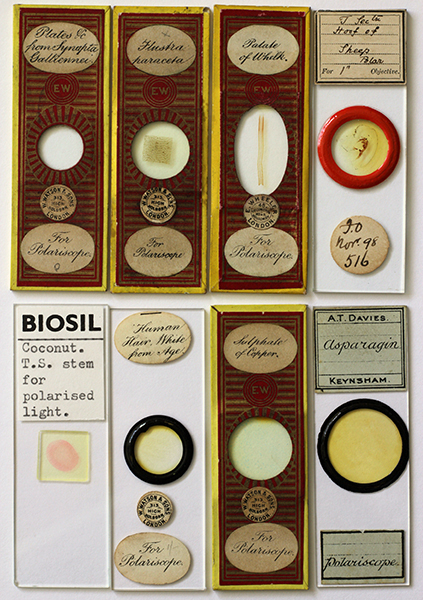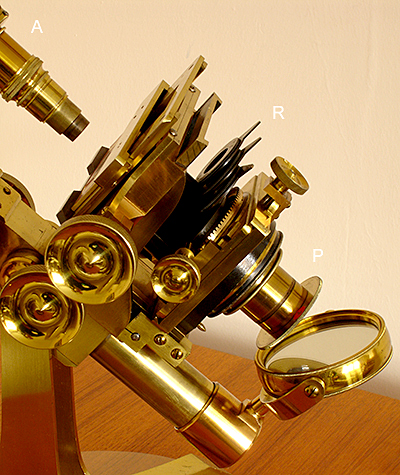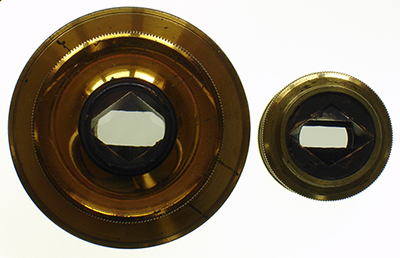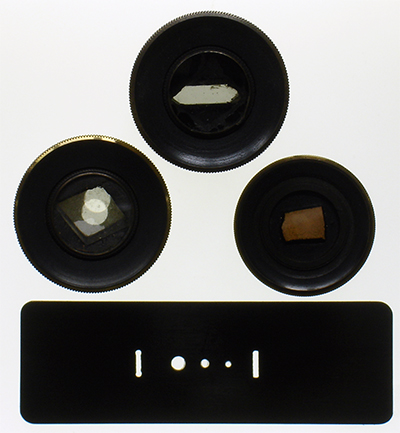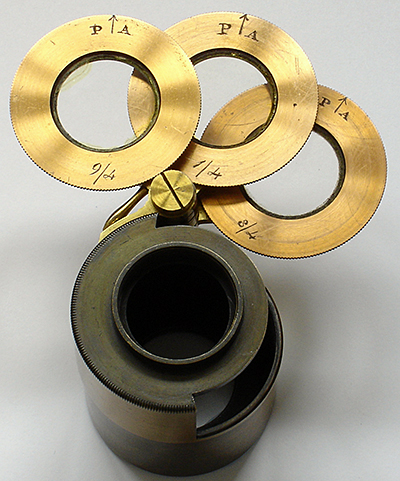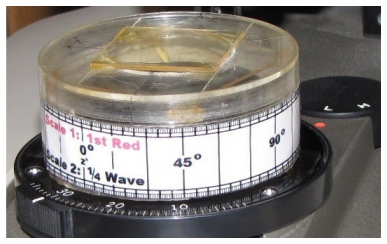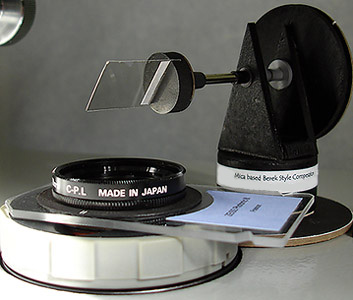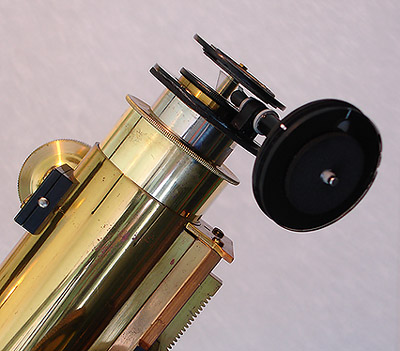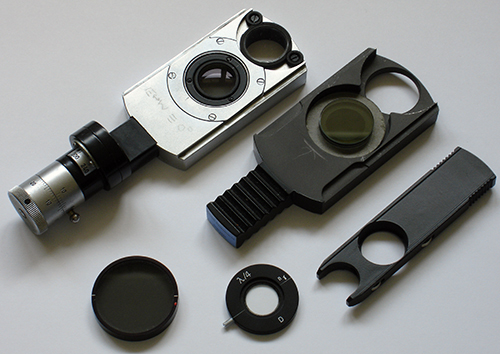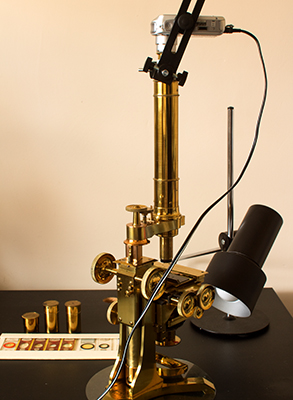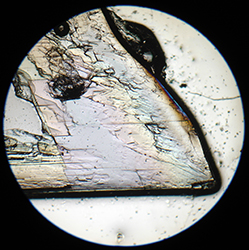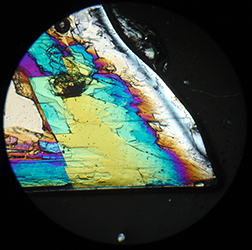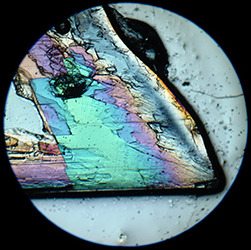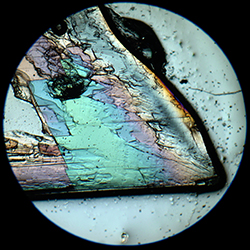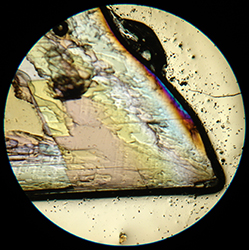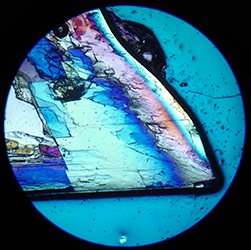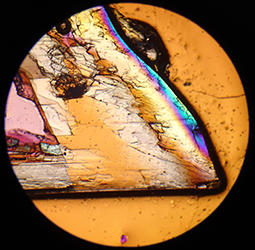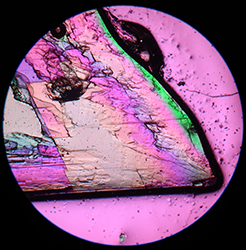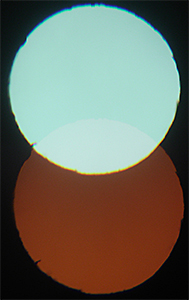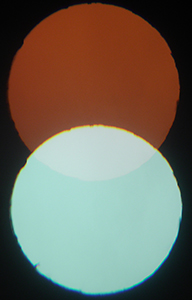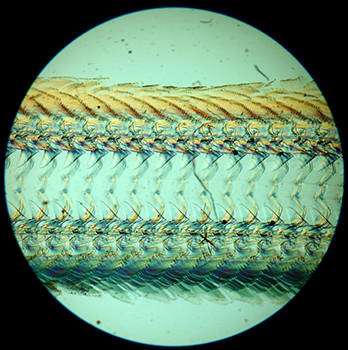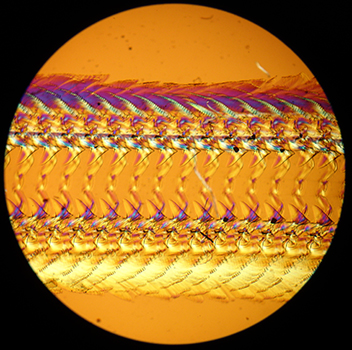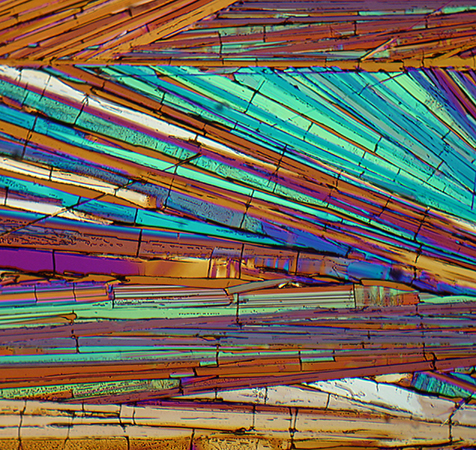|
Victorian retarders
Shown right are the variable retarders enclosed with the Ross, other makers offered similar. They were often called 'Darker's selenites' after William H Darker, a London instrument maker, who was noted for his ability to prepare the thin plates and for his polarisation apparatus. Selenite is a form of gypsum (hydrated calcium sulphate). The retarders fitted above the polariser on the condenser. Three retarders were offered - 1/4λ , 3/4λ and 9/4λ, PA was the 'positive axis' and each retarder could rotate 360°.
This, at first sight, odd combination of retarders was in reality rather clever. As Beck describes ('Achromatic Microscopes', 1865) it offered 13 retardation settings in ¼λ increments from ¼ to 3¼ wavelengths. These could be achieved by swinging in one or more retarders with their positive axes aligned or one turned 90° to subtract that wavelength from the total. Beck has a table listing all the combinations and their respective primary
and 'complementary tint'.
To match the colours Beck describes in his table, a retarder's PA was set parallel to one polariser with the other polariser at right angles, i.e. crossed polars. The 'complementary tint' was achieved by rotating one polariser 90° i.e. uncrossed. This contrasts with the modern practice of keeping the polarisers crossed and inserting the retarder at a fixed 45° angle to both polarising axes.
In use. Although offering a wealth of retardation settings, I found it a rather awkward device to use. It is nestled below the busy stage and does not offer a good view of, or easy access to, the retarders to make changes or check what has been set. I put white marks on the side of each so could check the orientation from the side. The freely rotating condenser mount could also easily be rotated out of alignment while adjusting retarder settings.
With the set of selenites in place, the polariser is some distance from the stage and can affect the aperture. A condenser can be used above the retarders for higher powers as advised by Beck.
Other methods of introducing retarders included a brass plate that sat below the slide on the stage, with either exchangeable retarders or rotatable to give variable retardation.
|
